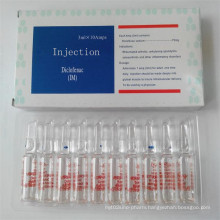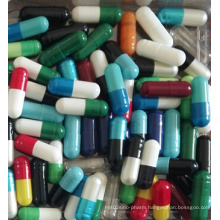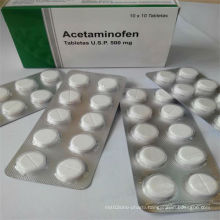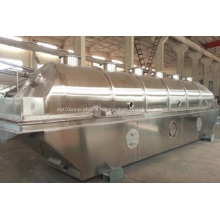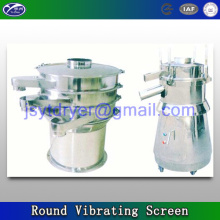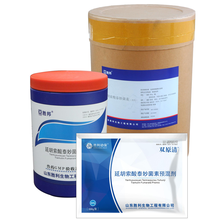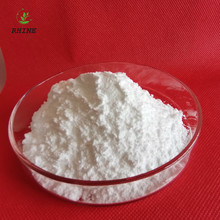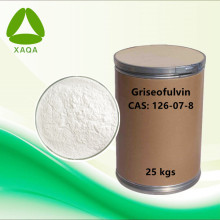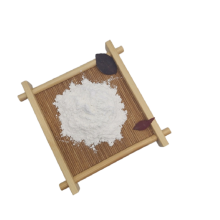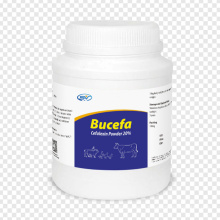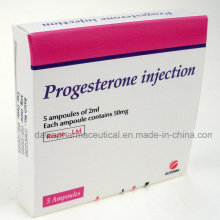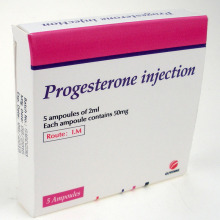Pharmaceuticals Cefuroxima Sodium for Injection
Basic Info
Model No.: cefu-1
Product Description
Model NO.: cefu-1 Usage Mode: For external use State: Solid Type: Biological Products Color: White Specification: 0.75g HS Code: 3001909091 Application: Surgery Suitable for: Elderly, Adult Shape: Powder Pharmaceutical Technology: Chemical Synthesis Trademark: OEM Origin: China
Contact us if you need more details on Cefuroxima Sodium. We are ready to answer your questions on packaging, logistics, certification or any other aspects about Antibiotics、Bacterial Infection. If these products fail to match your need, please contact us and we would like to provide relevant information.
| Product: | cefuroxima sodium for Injection |
| Basic information | This product is sterile powders cefuroxima sodium. Calculated as anhydrous. White or slightly yellow powder or crystalline powder; odorless, bitter taste. Shading, sealed and kept in a cool dry place. |
| Ingredients | The main ingredients cefuroxima sodium. |
| Chemical Name | (6R, 7R) -7- [2- furanyl (methoxyimino) acetamido] 3- carbamoyloxy oxo-8-oxo-5-thia-1-azabicyclo [4.2.0] oct-2-ene-2-carboxylate salts. |
| Formula | C16H15N4NaO8S |
| Molecular Weight | 446.37 |
| Properties | white to pale yellow powder or crystalline powder. |
| Indications | It can be used to cefuroxima sensitive bacteria caused by the following infections: 1, respiratory tract infections: Streptococcus pneumoniae, Haemophilus influenzae Klebsiella spp., Staphylococcus aureus (penicillinase enzyme producing bacteria and non-penicillinase enzyme producing bacteria), purulent respiratory tract caused by Streptococcus and E. coli infections, such as acute and chronic bronchitis, bronchiectasis with infection, bacterial pneumonia, lung abscess, and pulmonary infection. 2, ENT infections: otitis media, sinusitis, tonsillitis, pharyngitis. 3, urinary tract infections: E. coli and Klebsiella urinary tract infections caused by bacteria, such as acute and chronic pyelonephritis, cystitis and asymptomatic bacteriuria. 4, skin and soft tissue infections: Staphylococcus aureus (penicillinase enzyme producing bacteria and non-penicillinase enzyme producing bacteria), Streptococcus pyogenes, Escherichia coli, Klebsiella and caused intestinal bacteria of the genus skin and soft tissue infections, such as cellulitis, erysipelas, peritonitis and wound infections. 5, sepsis: by Staphylococcus aureus (penicillinase enzyme producing bacteria and non-penicillinase enzyme producing bacteria), Streptococcus pneumoniae, Escherichia coli, Haemophilus influenzae and Klebsiella caused by bacterial sepsis. 6, meningitis: Streptococcus pneumoniae, Haemophilus influenzae Neisseria meningitidis, and Staphylococcus aureus (penicillinase enzyme producing bacteria and non-penicillinase enzyme producing bacteria) caused by meningitis. 7, gonorrhea: from simple (uncomplicated) Neisseria gonorrhoeae (penicillinase enzyme producing bacteria and non-penicillinase enzyme producing bacteria) caused by gonorrhea and there are complications, especially for not penicillin treatment. 8, bone and joint infections: bone and joint infections caused by Staphylococcus aureus (penicillinase enzyme producing bacteria and non-penicillinase enzyme producing bacteria) caused. This product can still be used before surgery or surgery to prevent the growth of sensitive pathogens, reduce intraoperative and postoperative infection caused by pollution. Such as the abdomen and pelvis orthopedic surgery, heart, lung, esophageal and vascular surgery, total joint replacement surgery to prevent infection. |
| Dosage | It can be deep intramuscular injection, or intravenous injection or infusion. 1. intramuscular administration of the product per 0.25g dissolved in 3ml of sterile water for injection with 1.0ml of sterile injectable dissolved in water or 0.75g, was after the slow shake suspension only deep intramuscular injection. Before intramuscular injection, it is necessary Withdrawing without blood before injection. 2. Intravenous: 0.25g least with 2.0ml sterile water for injection were dissolved, 0.75g least with 6.0ml sterile water for injection were dissolved, 1.5g least with 15ml sterile water for injection to dissolve, and then shake slow intravenous injection, can also be Join intravenous drip tube. 4. This product is commonly used in adults for each 0.75g, administered every 8 hours, 5-10 days of treatment for life-threatening infection or rare serious infections caused by susceptible strains, each time increased to 1.5g, every 3 times a day; if necessary, the interval may be increased to once every six hours, the daily total of 3-6g. For bacterial meningitis, the dose every 8 hours should not exceed 3.0g. For uncomplicated gonorrhea intramuscular injection of a single dose of 1.5g, divided note hips on both sides. 5. Prevention of surgical infections: 0.5 to 1.5 hours before surgery intravenous injection of this product 1.5g, if the operation time is too long, then every 8 hours intravenous or intramuscular 0.75g dose. If it is open heart surgery, it should be with the introduction, intravenous anesthetic 1.5g; later administered once every 12 hours, a total dose of 6g. 6.3 months or more children, the daily per kilogram of body weight 50-100mg, 3-4 doses. Severe infections, daily per kilogram of body weight amount of not less than 0.1g, but can not exceed the maximum adult dose. Bone and joint infections, daily per kilogram of body weight 0.15g (no more than the highest dose used by adults), three doses. Meningitis patients per day per kilogram of body weight 0.2-0.24g, 3-4 doses. 7. Renal dysfunction, renal impairment should be based on the degree to adjust the usage and dosage, the recommended adjustment in the table below. 8. renal insufficiency in children, making adjustments should also refer to the table below. 9. creatinine clearance (ml / min) dose interval > 20 0.75-1.5g per 8h 10-20 0.75g per 12h <10 0.75g every 24h 10. For dialysis patients, at the end of dialysis, should then be given a single dose of 0.75g. |
| Adverse reactions | The product is well tolerated, common adverse reactions are as follows: 1, local reaction: If intramuscular injection site pain, thrombosis, phlebitis. 2, gastrointestinal reactions: such as diarrhea, nausea, pseudomembranous colitis. 3, allergic reactions: common skin rash, pruritus, urticaria. Occasionally allergy, drug fever, erythema multiforme, interstitial nephritis, toxic epidermal exfoliative dermatitis, Stevens Johnson syndrome. 4. Blood: the visible hemoglobin and hematocrit decrease, transient eosinophilia syndrome, transient neutropenia, thrombocytopenia and leukopenia psychosis, and occasionally thrombocytopenia. 5, liver function: Visibility ALT, AST, alkaline phosphatase, lactate dehydrogenase and a transient increase in serum bilirubin. 6, other: still see vomiting, abdominal pain, conjunctivitis, vaginitis (vaginal candidiasis disease), abnormal liver function (including cholestasis), aplastic anemia, hemolytic anemia, hemorrhage, causing seizures, prothrombin time prolonged pancytopenia, agranulocytosis psychosis. Taboo: cephalosporins or cephamycins drug allergy FDA ban. |
| NOTES | 1, the product with penicillin cross allergic reactions. Who are allergic to penicillin drugs, be careful using this product. Penicillin anaphylactic shock, should not re-elect the FDA. 2, when using this product should pay attention to monitoring of renal function, especially in patients receiving high-dose intensive. 3, renal dysfunction, the daily dose should be reduced. Diuretics or patients with application of potent aminoglycoside Antibiotics should pay particular attention, because the combination therapy had cause renal damage were reported. For these patients, renal function monitoring is preferably carried out. 4, this product can cause pseudomembranous colitis, have a history of gastrointestinal disease, particularly ulcerative colitis, colitis or antibiotic-associated colitis patients should be vigilant. After the diagnosis of pseudomembranous colitis is established, it should be given appropriate treatment. Withdrawal can be mild, moderate and severe should be given fluids, electrolytes, protein supplement, and should be chosen for Clostridium effective antibiotic drug therapy. 5, the FDA reported small number of children with mild to moderate hearing loss occurs. 6, compatibility and stability: Intramuscular injection: sterile water for injection preparation time, the product suspension at room temperature for 24 hours, 5 ºC refrigerator to save 48 hours to remain active. After this period, any unused solution should be discarded. Intravenous: The sterile injectable preparation using water, 750mg, 1.5g formulated solution after 24 hours at room temperature, 5 ºC refrigerator for 48 hours to remain active. This product can remain compatible within 24 hours at room temperature with the following solution: heparin (10-50u / ml), potassium chloride (10-40mEq / l), 0.9% Sodium Chloride. This product is 750mg and 1.5g, with 50ml or 100ml5% glucose injection, 0.9% sodium chloride injection, 0.45% sodium chloride injection diluted, can be stored at room temperature for 24 hours, refrigerator stored for 7 days. 7, interfere with the diagnosis: It can interfere with direct Coombs test results show positive responses to this phenomenon can interfere with the blood of the cross; there will be time for Benedict or Fehling test test or urine dipstick test Clintest tabets false positive reactions, but the enzyme test method is not a false positive. |
| Pregnant and lactating women | Pregnant women should be weighed. This product can be secreted into the milk, lactation. |
| Pediatric Use | It has been reported neonatal cephalosporin stored role, safety and efficacy has not been established for children less than three months, therefore, not recommended. |
| Geriatric Use | There is currently a lack of detailed research data. Elderly kidney dysfunction, dosage should be adjusted. |
Contact us if you need more details on Cefuroxima Sodium. We are ready to answer your questions on packaging, logistics, certification or any other aspects about Antibiotics、Bacterial Infection. If these products fail to match your need, please contact us and we would like to provide relevant information.
Product Categories : Antibiotics
Premium Related Products
Other Products
Hot Products
High Quality 200mg Amiodarone Hydrochloride TabletsLarge Stock Whiten Skin Monobenzone CreamGeneral Medicine Omeprazole 20mg Injection for Gastrohelcosis and Stomach AcidGeneral Medicine Ceftriaxone Sodium InjectionReady Stock Skin Whitening Anti-Aging Vitamin C InjectionOEM Tablet 500mg ParacetamolHigh Quality 500mg Hard Capsules Amoxicillin (amoxycillin)Best and Low Price Ceftriaxone Sodium Injection CeftriaxoneBest Quality Omega 3 Deep Sea Softgel Capsule Fish OilFDA Approved Curative Antimalarial ArtemisininMedicine Treating Brain Injury Citicoline Sodium InjectionProtease Alpha Chymolase for Inflammatory EdemaGeneral Medicine Medroxyprogesterone Acetate InjectionAmikacin Injection General Medicine DrugsSkin Whitening Gsh Personal Care Glutathione InjectionBody Slimming Fitness Lose Weight Weight Loss L-Carnitine Injection2.0g/5ml

